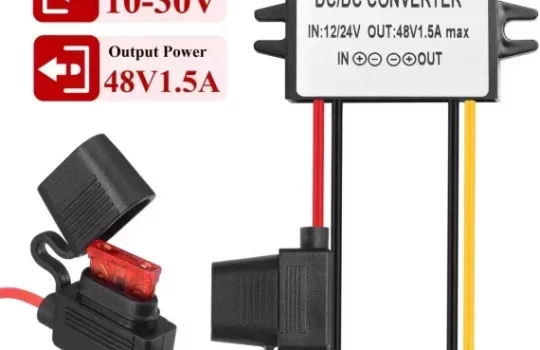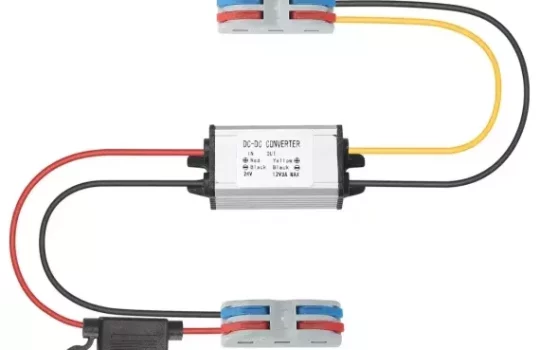When working with electronic devices and circuits, maintaining a stable and reliable power supply is crucial. A key component in managing power is the voltage regulator, which ensures that electronic devices receive the correct voltage required for proper operation. Two common types of voltage regulators are adjustable DC voltage regulators and fixed DC voltage regulators.

Both types serve the same core function: regulating voltage to a stable output. However, each comes with its own strengths and limitations, making them suitable for different use cases. In this article, we’ll break down the key differences, common applications, and benefits of adjustable and fixed voltage regulators. This will help you choose the right option for your specific needs.
Understanding Voltage Regulators
What is a DC Voltage Regulator?
A DC voltage regulator is an electronic device designed to maintain a constant output voltage regardless of variations in input voltage or changes in the load. There are two primary categories of DC regulators: adjustable and fixed.
- Adjustable DC Voltage Regulators allow users to set or modify the output voltage within a specified range.
- Fixed DC Voltage Regulators provide a constant output voltage that cannot be altered.
Voltage regulators play a key role in protecting sensitive components like microcontrollers, sensors, and communication devices. These components rely on a stable power supply to maintain their longevity and reliable performance.
Adjustable DC Voltage Regulators
What Are Adjustable DC Voltage Regulators?
Designers equip adjustable DC voltage regulators with potentiometers (variable resistors) or selectable resistor networks so that users can set the output voltage anywhere within a specified range. Engineers install these regulators in circuits when they need to dial in different voltage levels to match a device’s or load’s unique requirements.
Advantages of Adjustable DC Voltage Regulators
- Flexibility: The most significant advantage of adjustable voltage regulators is their versatility. They offer the ability to modify the output voltage, making them ideal for applications that require different voltage levels during operation.
- Customizable Output: Many adjustable regulators allow users to fine-tune the voltage to meet the exact requirements of different components, such as microprocessors, sensors, and actuators. This customization is especially useful in experimental or prototyping environments.
- Cost‑Effective for Multiple Uses: Engineers choose adjustable regulators for projects that demand multiple voltage levels, because a single adjustable unit costs less than buying several fixed regulators.
- Wide Range of Applications: Students, researchers and industrial designers deploy adjustable regulators in educational, experimental and industrial projects to test and validate circuits at varying voltage levels.
Common Applications
- Prototyping and Testing: In prototyping environments, adjustable regulators are ideal for testing different voltage configurations and assessing the behavior of electronic components under varying conditions.
- Custom Electronics Projects: When designing custom circuits, adjustable regulators offer flexibility in fine-tuning the voltage to the specific needs of different devices or subsystems.
- Engineers and technicians commonly use adjustable regulators in bench power supplies. These regulators let them set the voltage to the desired level for testing various circuits.
Fixed DC Voltage Regulators
What Are Fixed DC Voltage Regulators?
A fixed DC voltage regulator delivers a constant output voltage that users cannot adjust. Manufacturers usually set these regulators to standard levels such as 5V, 9V, 12V, or 15V. The output remains stable, even when the input voltage or load conditions change—within a defined range.
Advantages of Fixed DC Voltage Regulators
- Simplicity: Fixed voltage regulators are much simpler to use than adjustable regulators. There is no need to configure the output voltage, making them ideal for applications where a specific, constant voltage is required.
- Cost-Effective: Fixed regulators are generally more affordable than adjustable ones, as they do not require additional components like a potentiometer for voltage adjustment.
- Compact and Efficient: Fixed regulators are often smaller and more efficient because they are designed for specific voltage outputs. This makes them ideal for use in consumer electronics and mass-produced devices where the voltage does not need to change.
- Reliability: Because there is no need for manual adjustments, fixed regulators tend to be more reliable and easier to maintain, making them a popular choice for industrial applications.
Common Applications
- Consumer Electronics: Many consumer electronics, such as smartphones, tablets, and televisions, use fixed voltage regulators to power specific components that require a constant voltage.
- Automotive Applications: In vehicles, fixed voltage regulators are used to ensure that the electronics receive the correct voltage from the vehicle’s power system, often from a 12V or 24V battery.
- Power Supply Systems: Fixed regulators are frequently used in power supplies to deliver a consistent voltage for different parts of a system, such as microcontrollers, sensors, and communication devices.
Key Differences Between Adjustable and Fixed DC Voltage Regulators
- Voltage Customization
Manufacturers build adjustable DC voltage regulators so that users can set the output voltage to match their circuit’s requirements. In contrast, manufacturers configure fixed regulators to deliver a factory‑preset voltage that users cannot change.
- Applications
Engineers choose adjustable regulators for experimental or custom projects that demand different voltage levels. Conversely, they install fixed regulators in mass‑produced consumer and industrial products to guarantee a specific, stable voltage at all times.
- Ease of Use
Fixed voltage regulators are easier to implement, especially for beginners, as they do not require any adjustments. Adjustable regulators may require fine-tuning and component selection to achieve the desired voltage output, which might be more complex for beginners.
- Cost and Efficiency
Engineers optimize fixed regulators for particular voltage outputs, so they deliver cost‑effective and efficient performance. Conversely, engineers add extra components to adjustable regulators to enable voltage adjustment, which drives up cost and lowers efficiency.
- Size and Form Factor
Manufacturers design fixed voltage regulators for specific applications, so they have a smaller form factor. In contrast, adjustable regulators include extra components to enable configurability, which makes them larger.
When to Use Adjustable or Fixed DC Voltage Regulators?
Best Scenarios for Adjustable Regulators
Projects requiring multiple voltage outputs benefit from adjustable regulators, as they allow a single device to deliver different voltages.
Prototyping and testing environments demand flexibility, which adjustable regulators provide through tunable voltage settings.
Designing multi‑purpose power supplies becomes easier with adjustable regulators, enabling one design to accommodate various circuits.
When to Use Fixed Regulator
Consumer electronics and mass‑produced devices rely on fixed regulators for consistent, unchanging voltage output.
Stability and simplicity are priorities in industrial applications, making fixed regulators the go‑to choice for reliable performance.
Cost‑sensitive and size‑constrained designs often employ fixed regulators to minimize component count and reduce expenses.
Both adjustable and fixed DC voltage regulators have unique advantages and serve different purposes. Adjustable regulators provide greater flexibility and customization, making them suitable for experimental and prototype environments. On the other hand, fixed regulators offer simplicity, cost‑effectiveness, and reliability, making them ideal for mass production and standard applications.
The right type of regulator depends on your specific needs. If your project requires a customizable output voltage, an adjustable regulator is the better choice. For commercial products that need a stable, predefined voltage, a fixed regulator is more suitable. Understanding the pros and cons of each type helps you make a well-informed decision for your application.





